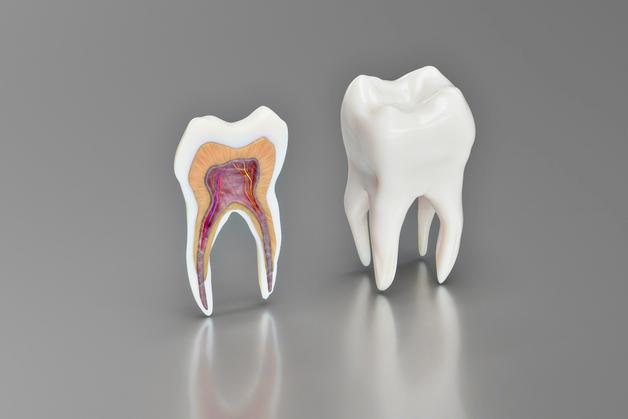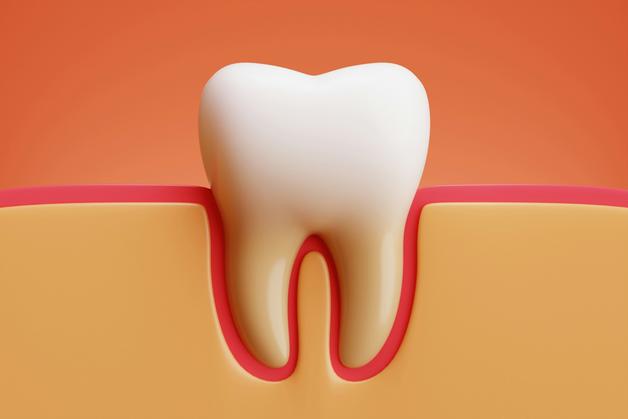Witnessing your baby’s first tooth emerge can be both an exciting milestone and a source of endless questions. Is the timing normal? Should the teeth be appearing in a specific pattern? When discomfort strikes, what can actually help? The baby teething order—the sequence and symmetry in which primary teeth appear—often becomes a focal point for anxious parents. Understanding what is typical, when variations warrant attention, and how medical recommendations intersect with daily comfort can offer welcome relief. This in-depth overview explains the medical science behind teething order, explores the diverse experiences of families, and provides clear strategies to foster both comfort and healthy oral development.
Understanding Baby Teething Order: Why Sequence Matters
Have you noticed that your baby’s teeth seem to arrive in pairs or follow a mirrored pattern? The baby teething order is more than a neat schedule—it’s a carefully orchestrated developmental process. The arrival of the lower central incisors (those unmistakable bottom front teeth) is rarely random; they typically pave the way, appearing around 6–10 months. But why this order? The symmetrical sequence allows for easier adaptation to new foods, supports the development of clear speech, and preserves vital space for permanent teeth.
Disturbances in this patterned eruption can sometimes indicate health concerns, though minor variations are very common. Pediatric dental research consistently highlights the importance of both timing and order in supporting balanced jaw development and preventing future alignment issues. And yet, genetics, nutrition, and individual growth make each child’s timeline unique.
Timeline and Stages—From Incisors to Molars
The baby teething order generally unfolds as follows, with age ranges reflecting the wide variation observed in healthy infants:
- Lower central incisors (around 6–10 months): The iconic bottom front teeth serve as the pioneers, signaling readiness for more than just milk.
- Upper central incisors (approximately 8–12 months): These top front teeth soon catch up, facilitating a stronger bite for tasting and chewing soft solids.
- Upper lateral incisors (9–13 months): Flanking the central teeth, these arrive to complete the set for initial chewing mechanics.
- Lower lateral incisors (10–16 months): Their presence allows for balanced biting, supporting harmonious growth across the jawline.
- First molars (upper 13–19 months, lower 14–18 months): Larger, flatter surfaces emerge in the back of the mouth, inviting a transition to mashing and grinding foods.
- Canines (eyeteeth) (upper 16–22 months, lower 17–23 months): Pointed and sturdy, these teeth bridge gaps, reinforcing efficient tearing and contributing to stable jaw alignment.
- Second molars (lower 23–31 months, upper 25–33 months): Completing the set, these robust grinding teeth signal the near completion of primary tooth eruption and readiness for more challenging textures.
Individual variation is common, but what matters medically is symmetry—teeth usually emerge in pairs, left and right—ensuring jaw balance and minimizing the risk of future bite issues.
The Roles of Different Teeth in Chewing and Speech
Each class of tooth has a defined purpose, both from a functional and developmental perspective. Incisors—those front and side teeth—are built for snipping and biting, laying the groundwork for early speech formation. Canines have a unique design ideal for tearing, while molars are masterpieces of mastication, breaking down complex foods for easier digestion.
This sequential emergence is driven by both genetics and physiological maturation. Why does it matter? The pattern helps guide speech clarity, influences facial symmetry, and allows for stepwise dietary diversification. Children who experience disruptions in this sequence due to health conditions or genetics may be more prone to later orthodontic interventions. Still, most variations cause little lasting impact, especially where symmetry remains.
Factors Influencing the Baby Teething Order
So what influences when and how teeth erupt? While the baby teething order follows a common trajectory, the exact timeline can be swayed by:
- Genetics: Parents who teethed early or late often notice similar patterns in their children.
- Prematurity: Preterm infants may sprout teeth a bit later.
- General Health: Chronic illnesses, hormonal imbalances, or metabolic issues can delay or disrupt normal order.
- Nutrition: Calcium, vitamin D, and phosphorus are foundational for proper tooth mineralization. Deficiencies can cause not just delay, but also weaker enamel and higher cavity risk.
Environmental factors, feeding methods, and even minor illnesses can introduce apparent pauses or subtle shifts, but the mirrored emergence remains the most reassuring indicator of normal progress.
Normal Variation vs. Concerning Patterns
Should a tooth that comes in “out of order” raise alarms? Most shifts are benign, and differences of weeks between sides rarely have clinical significance. Medical guidelines suggest attention is needed if:
- No teeth erupt by 15–18 months.
- Teeth appear extremely early (before 3–4 months).
- The eruption is highly asymmetrical, or teeth are missing or oddly shaped.
- Teeth are present at birth (natal teeth) or are extra (supernumerary).
Dental evaluation is advised, especially if other developmental delays accompany unusual tooth patterns. Sometimes, birth trauma or genetics yield anomalies, such as fused teeth or enamel defects, which a dentist can assess for future implications.
Recognizing Teething Symptoms and Separating Fact from Myth
Is teething to blame for every fuss, drool, and sleepless night? Classic symptoms—drooling, mild gum swelling, flushed cheeks, the irresistible urge to chew—are familiar to most families. The emergence of a tooth beneath the gum can cause enough local inflammation to generate discomfort and even minor eruption cysts (bluish bumps that disappear on their own).
But high fevers (>100.4°F/38°C), persistent diarrhea, and severe rashes are not direct results of teething, despite enduring myths. Teething might lower mucosal resilience, making infections more likely, but significant systemic symptoms typically need medical attention. If doubt lingers, consult your pediatrician without delay to screen for infection or other conditions.
Providing Comfort and Safe Relief Strategies
How can parents help their teething child without crossing safety boundaries? Evidence-backed relief includes:
- Gum massage: Gentle pressure with a clean finger or cool, moist gauze offers genuine comfort.
- Cool (not frozen) teethers: Chilled rubber toys or pacifiers can numb irritation.
- Cold foods: For children on solids, chilled fruits or yogurt can provide soothing relief and nutrition.
- Pain relief medications: Acetaminophen and ibuprofen are both scientifically validated for severe discomfort (always use precise dosing and consult a healthcare provider).
Avoid benzocaine or lidocaine gels due to their link with rare but serious side effects (such as methemoglobinemia). Never use amber necklaces or similar jewelry, which increase the risk of strangulation or choking. Supervise all teething toys to prevent accidental ingestion of parts.
Oral Hygiene Begins with the First Tooth
Dental professionals stress the importance of starting oral hygiene as soon as the first tooth erupts. A soft, child-specific brush with a tiny smear of fluoride toothpaste helps build healthy habits and prevents early decay. Flossing should begin when two teeth touch—an often-overlooked step—and brushing or flossing must remain a parent-assisted routine until children demonstrate reliable skill, usually not before age seven or eight.
Keeping baby bottles out of bed (to avoid early childhood caries) and limiting sugary snacks both defend against dental decay. And, yes, that first dental checkup should happen by age 1 or six months after the first tooth makes its appearance, whichever occurs first.
What Happens When Baby Teeth Fall Out?
The baby teething order doesn’t end with eruption; it shapes the path of tooth loss, too. Around age six, lower central incisors loosen and make way for permanent teeth, often starting in the same order as the original appearance. The loss pattern, again mirrored and paired, encourages orderly spacing of the adult set. Early loss from injury or decay may disrupt this, inviting crowding and the potential need for orthodontics.
Nutritional Support for Teething and Healthy Development
Supporting the mouth’s physiological demands means offering foods naturally rich in calcium, vitamin D, vitamin C, and phosphorus. Dairy, cooked vegetables, soft cheeses, and mashed fruit become soothing, nutritious allies during periods of gum soreness. The temptation to offer sweet snacks as solace should be avoided; these heighten the risk of tooth decay rather than offering real comfort.
When to Consult a Professional
It’s entirely reasonable to err on the side of caution if something raises concern. Parents should seek guidance if:
- No primary teeth by 15–18 months.
- Teeth erupt before 3–4 months.
- Teeth are missing, extra, malformed, or highly delayed.
- Gums exhibit persistent redness, swelling, pus, or unusual odor.
- High fever, ongoing diarrhea, or distress unrelated to local gum symptoms appears.
Dentists and pediatricians can offer reassurance, targeted examination, and referrals if a systemic concern or developmental disorder is suspected.
Key Takeaways
- The baby teething order typically begins with lower central incisors, proceeds in a mirrored, paired manner, and is shaped by both genetics and developmental needs. Symmetry and gradual progression are much more significant than strict adherence to average timelines.
- Classic teething symptoms include drooling, mild gum swelling, localized irritability, and sleep disturbance, but persistent high fever or digestive symptoms likely point to infection or unrelated illness.
- Early oral hygiene, safe comfort strategies, and periodic dental evaluation lay the foundation for lifelong oral health.
- Poor nutrition can delay both eruption and strengthen of teeth, so calcium, vitamin D, and balanced meals should be prioritized.
- Consultation with a dental or pediatric professional is warranted in the face of unusual delay, early arrival, missing, extra, or malformed teeth, or if marked systemic symptoms occur.
- For parents wishing for tailored advice and convenient health questionnaires, the Heloa app offers direct access to guidance and support.
Science meets daily life at every stage of the baby teething order, blending evidence-based reassurance with practical comfort for the challenges—and joys—of early childhood. Your vigilance and support provide the comfort and foundation your child needs for a healthy smile, now and in years to come.
Questions Parents Ask
Can my baby’s teeth come in out of order?
Absolutely, it’s quite common for teeth to emerge in an unexpected sequence. While many babies follow the typical pattern, some may see teeth erupting in a different order. This isn’t usually a cause for concern—variations may happen depending on genetics or individual growth. As long as your child seems comfortable and teeth eventually appear on both sides of the mouth (maintaining some sense of symmetry), there’s rarely a reason to worry. If you ever have questions or notice other unusual signs, reaching out to a pediatric dentist can offer reassurance and ensure everything is progressing well.
What should I do if my baby’s teeth are late to appear?
Some babies take a little longer than others to start teething, and in most cases, this is a sign of their unique rhythm rather than a problem. Delays can be influenced by genetics, nutrition, or even whether your baby was born prematurely. If your baby hasn’t sprouted a first tooth by 15 to 18 months, it may be helpful to check in with your pediatrician or pediatric dentist, just to make sure there isn’t an underlying concern. Most of the time, though, a late appearance of teeth is entirely normal and simply part of your child’s own developmental timeline.
Is it normal for teething to cause a rash around the mouth?
Yes, it’s common for babies to develop a mild rash around their mouth or chin during teething. All that extra drooling can irritate the delicate skin. Gently wiping away saliva and using a soft barrier ointment can help protect the skin. Usually, this kind of rash is harmless and temporary. However, if the rash seems severe, spreads, or doesn’t improve, you can always check with your child’s healthcare provider for tailored advice and gentle solutions.

Further reading:









